This day trip involved a mere half-hour drive south of Dundalk to one of Ireland’s oldest cities, the port city of Drogheda. We were in search of ancient history in County Louth. We made a few stops on our way to Drogheda, stopping first at Saint Mochta’s House.
These are the sights we saw and the history lessons we experienced during our day in the Drogheda area.
St. Mochta’s House
St. Mochta’s House stands out in a working farm field just yards from St. Mary’s Abbey. We did not have permission from the farmer to walk out onto his plowed field, so we took photos from a distance.
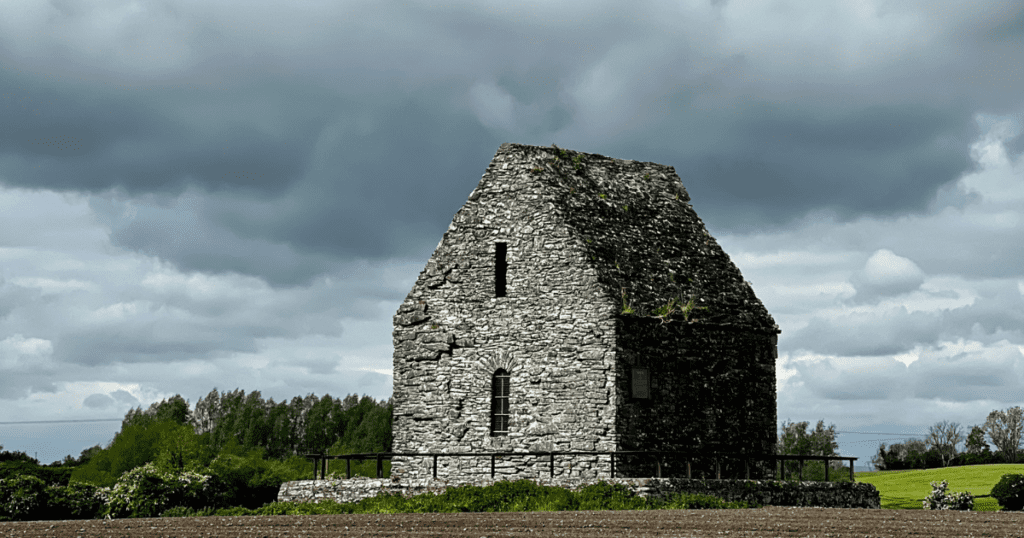
St. Mochta’s House
This small 12th Century Church is believed to have housed St. Mochta’s relics. St. Mochta was one of St. Patrick’s disciples.
St. Mary’s Abbey
St. Mary’s Abbey is a large church ruin that now stands at the edge of farmland. The present abbey was built in 1312 over another existing ruin. Entry past the surrounding fence and gates is not permitted, so again, we could only take a few photos here.

St Mary’s Abbey
St. Mary’s abbey was one of the most important abbeys of its kind in Ireland. Historically it isn’t easy to date, but it can be regarded as the direct lineal descendant and heir to the prestige and possessions of the Irish Monastery founded in the sixth Century by St. Mochta.
Plaque in place in front of St. Mary’s Abbey
Hatch’s Castle, Ardee
With its unusual rounded corners, Hatch Castle is one of two 14th-century castles in downtown Ardee; however, it is a private home today.
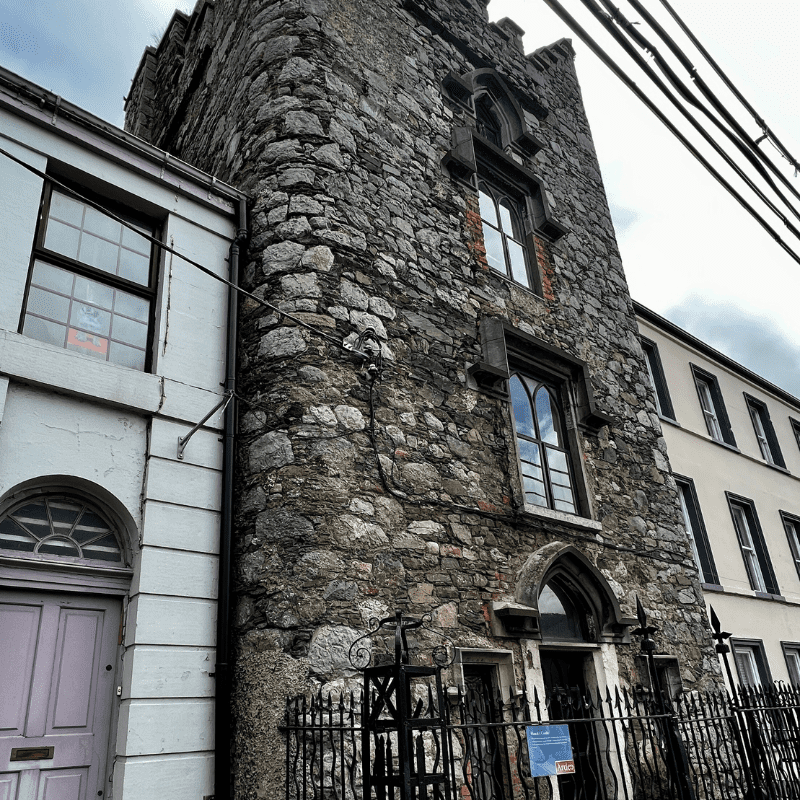
Hatch Castle
By the time we reached Ardee, it was lunchtime, and we found a monstrously huge roast beef carvery lunch at Gonzo’s Market. We were both ready for a nap after lunch, but there were too many great places to explore, and we could nap anytime, right?


Carvery lunch
The Jumping Church and Cemetery
Well, this Church has an interesting legend. A west wall of the Jumping Church also referred to as the Kildemock Bouncing Church, is supposed to have moved, or jumped, two or three feet inward during a storm in February 1715.
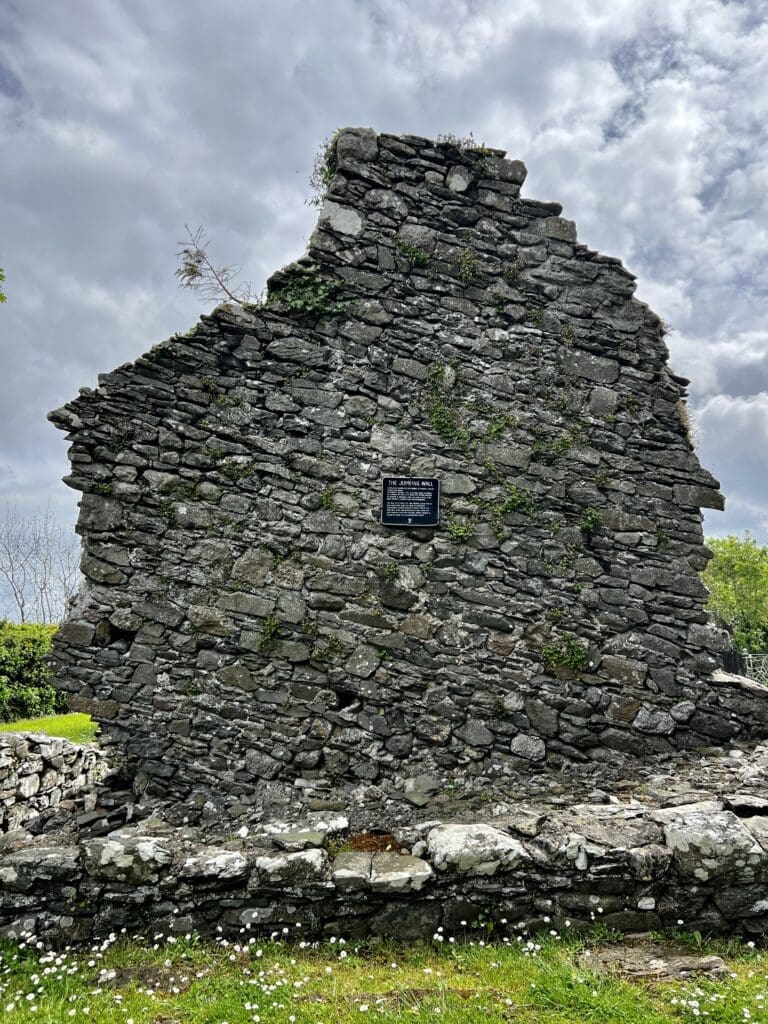
Jumping Church wall
The legend says the wall moved so that an excommunicated person buried inside the church wall would be excluded and moved outside of the church wall. The Jumping Church was built in the 14th Century, although there are stones from the 13th Century here.
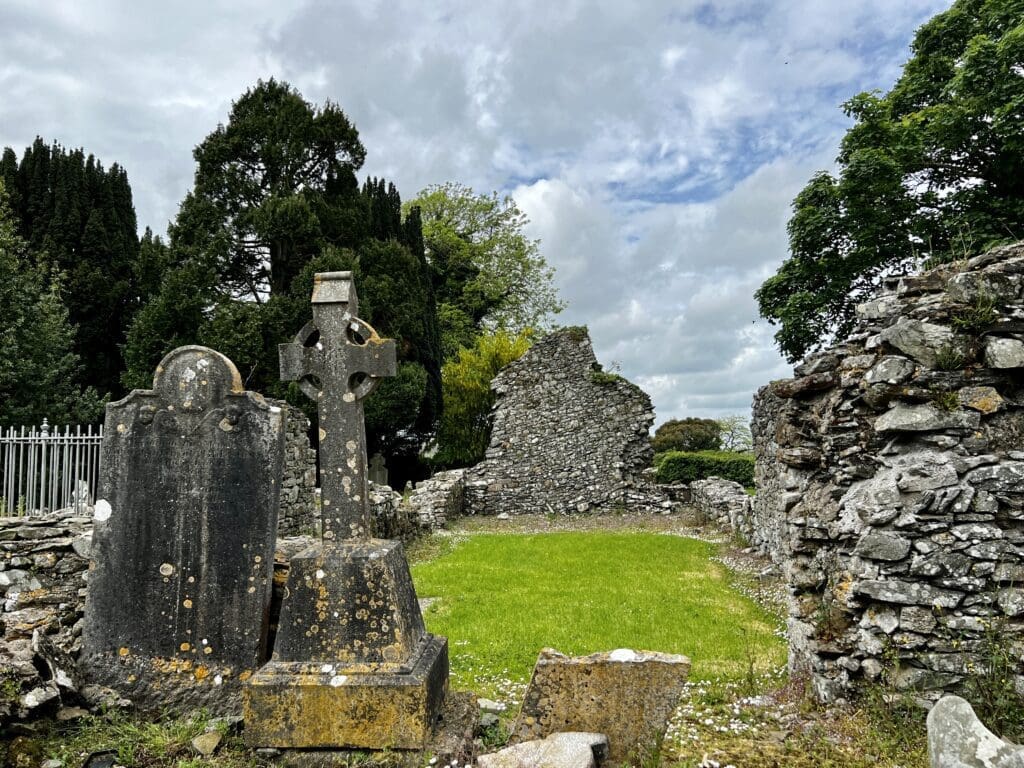
Graveyard and Jumping Wall
It’s quite an interesting story, isn’t it, and with a reasonably specific date also! We searched a long time for a geocache hidden here at this Church and cemetery, but we could not find it as is often the case with us.
Old Mellifont Abbey
Old Mellifont Abbey is an extensive and beautiful ruin of a 12-century abbey. Ireland’s first Cistercian monastery was founded here in 1142.
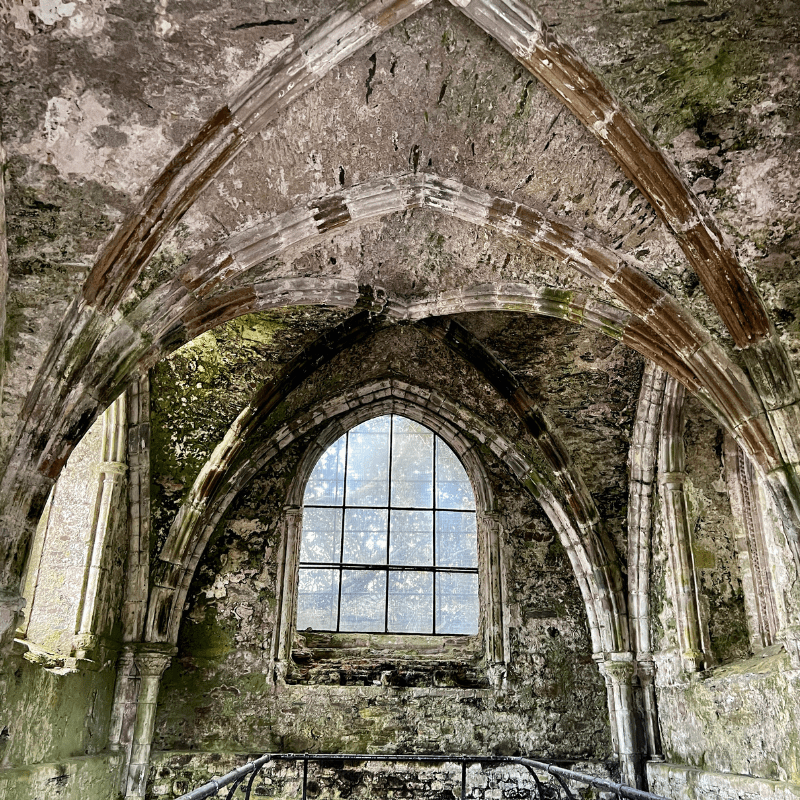
The Calefectory – room for the sick and elderly. One of the few places a fire could be lit.
The abbey is a national monument today and includes magnificent ruins, a large parking lot, and a visitor center. Unfortunately, the visitor center was closed during our Sunday visit.
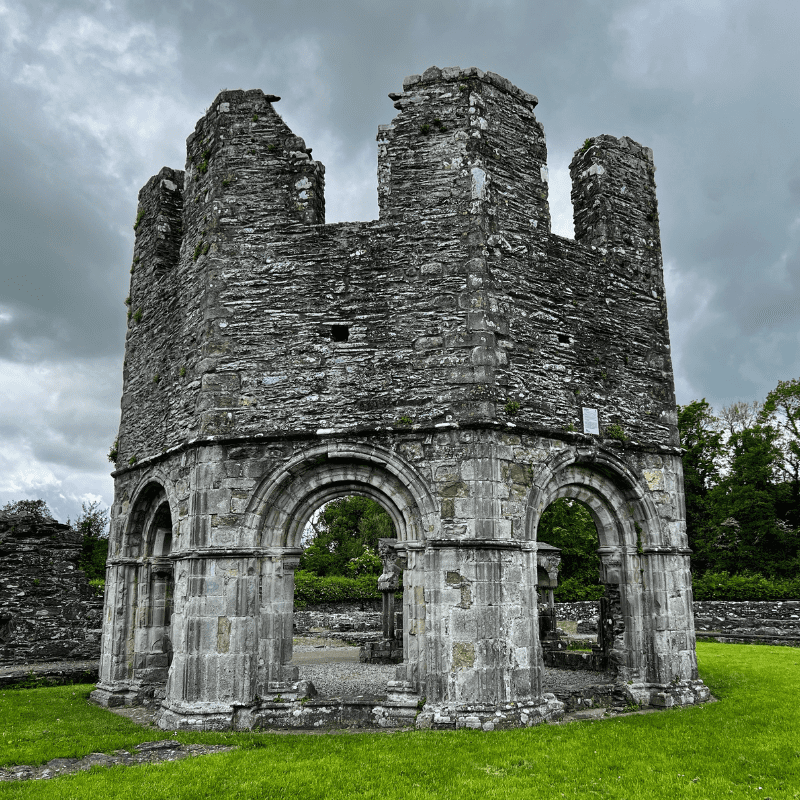
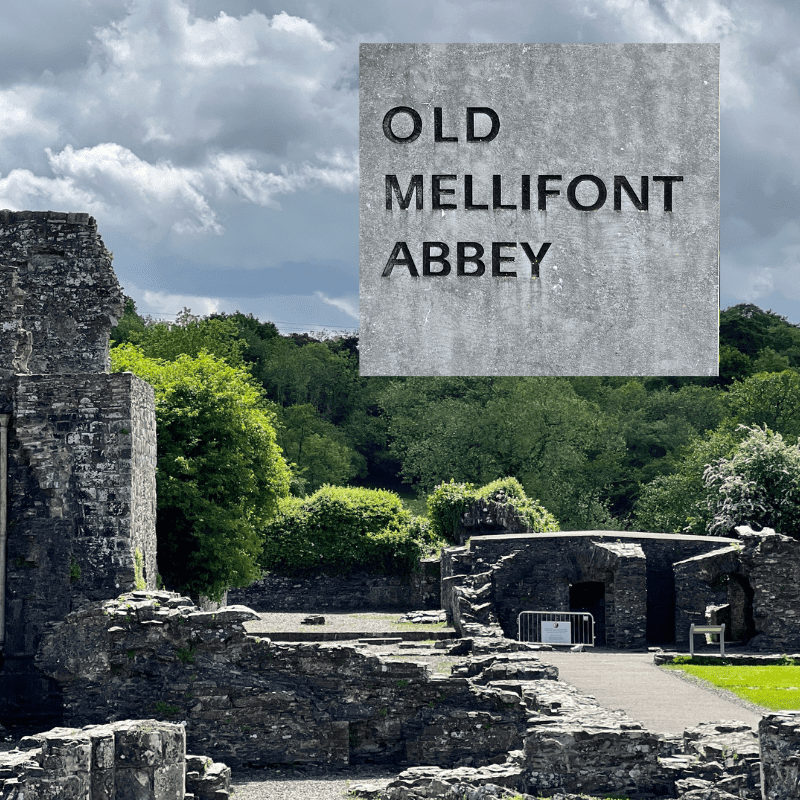
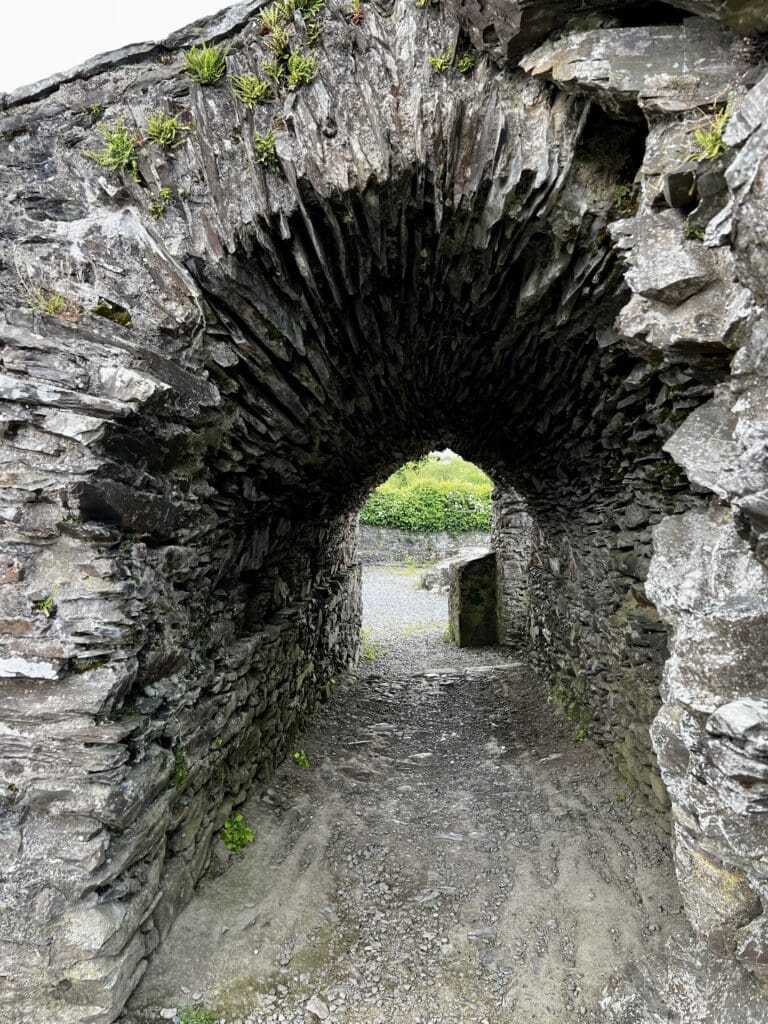
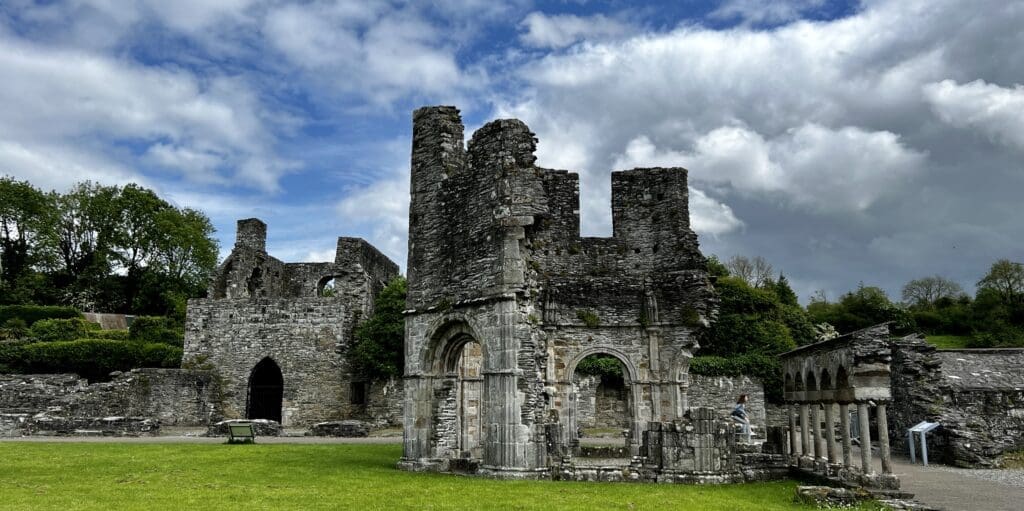
Old Mellifont Abbey is very large and spread over a large space.
In 1539, the abbey was dissolved and became a fortified manor home. In 1690, William of Orange used the abbey as headquarters during the Battle of the Boyne. Although the abbey is in ruins today, it is spectacular and enormous.
Drogheda
Drogheda is one of the oldest towns in Ireland. It is very near the famed Newgrange in the Boyne Valley. Its name means “bridge of the ford” and comes from its location on the Boyne River.
There are many historical attractions in this Boyne Valley area, many of which we’ve visited in past years, like Newgrange and the Hill of Tara. Still, we’d never seen the town of Drogheda and many other nearby historical sites.
We think our obsession with Ireland and Northern Ireland is very good. We are always fascinated by its history and the stories of its magical past. I fear we will never see everything in Ireland, but we will keep trying.
St. Peter’s Church
St. Peter’s Church is in Drogheda. It was built in 1884 over an earlier 1791 church, and some elements of that earlier Church were incorporated into the later construction. This beautiful Gothic Church has gorgeous stained glass windows, sculptures, and a marble altar.
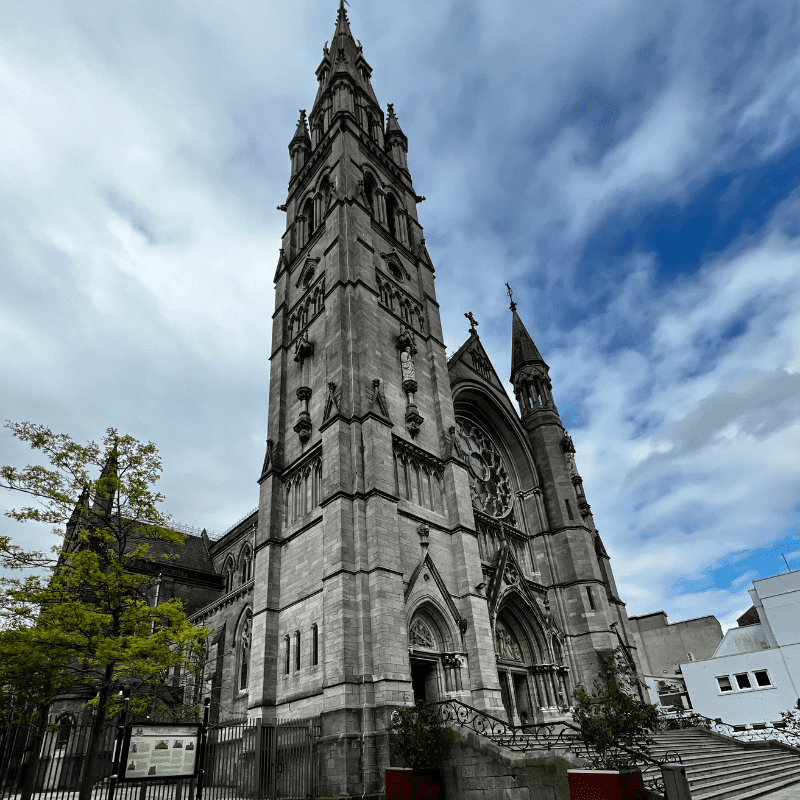
St. Peter’s Church, Drogheda
A quick Google search will reveal the fascinating history of this Church. Still, one of the remarkable and most famous things St. Peter’s Church is known for is that it houses a shrine to St. Oliver Plunkett.
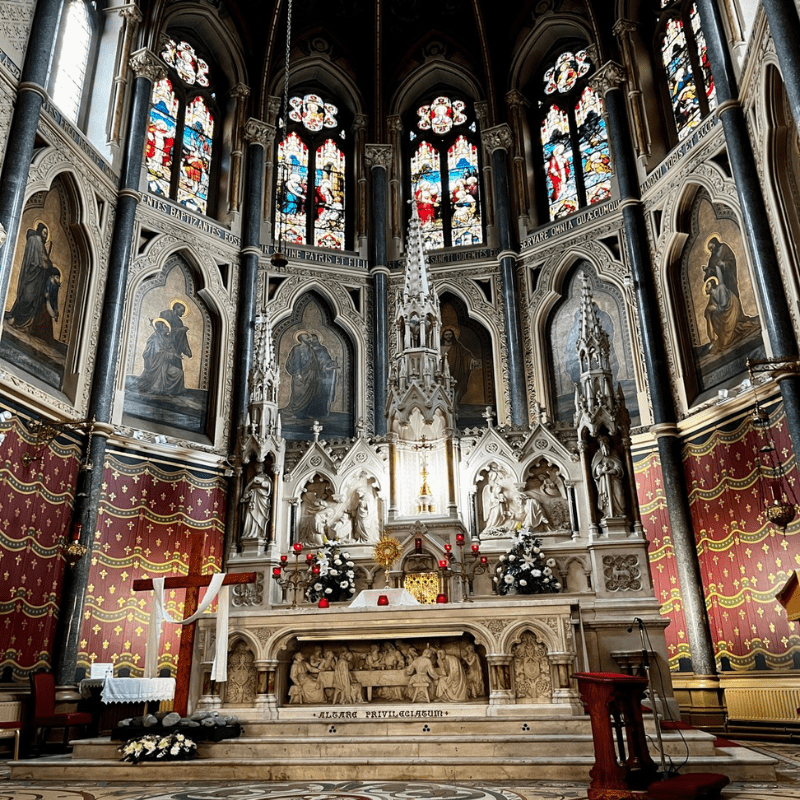
The beautiful interior of St. Peter’s Church
Plunkett was hanged in 1681 and declared a saint in 1973. St. Oliver Plunkett’s severed, preserved head makes up the centerpiece of a golden shrine. Oliver Plunket is considered a martyr and is Ireland’s patron saint for peace and reconciliation.
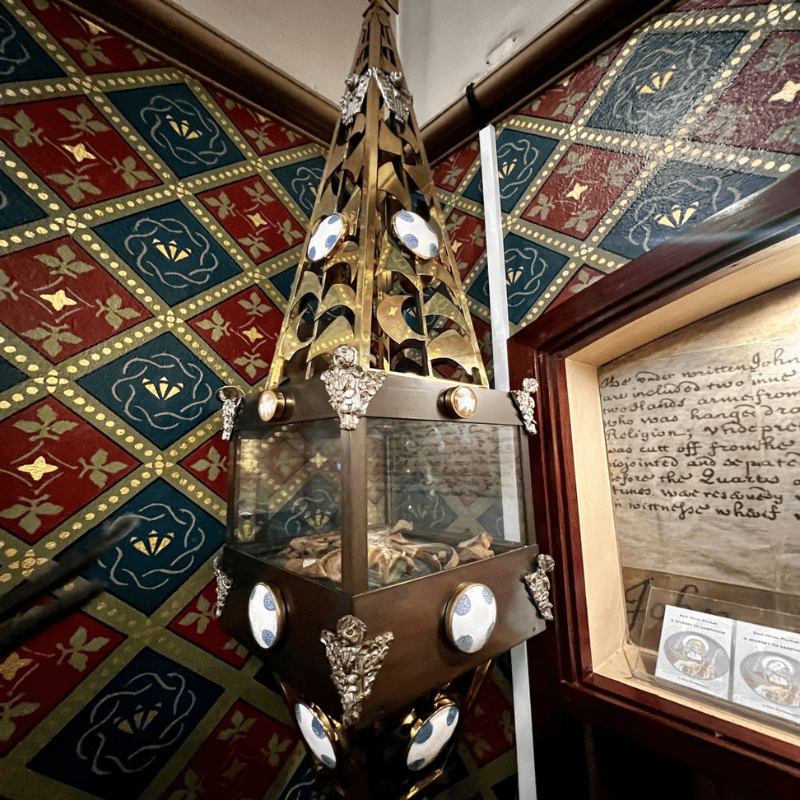
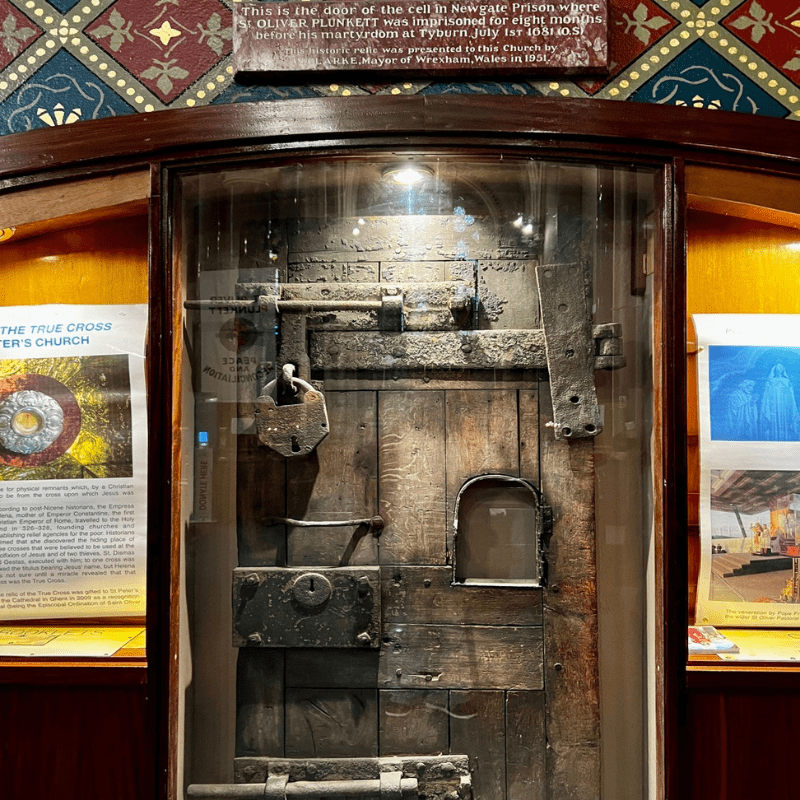
Plunkett’s shrine and door to the cell in Newgate Prison where Oliver Plunkett was jailed
St. Laurence Gate
St. Laurence Gate at the edge of Drogheda is an outer defensive towered gate, also called a barbican, built as part of the medieval city wall as part of its fortification. This Gate was constructed during the 13th Century and had two round towers.

St. Laurence Gate
In addition to protecting the city, St. Laurence Gate provided a controlled site where traders could enter and be required to pay taxes on their products.
Magdalene Tower
Steve and I just happened upon this Tower while wandering around the town. Built in the 14th Century, it is the only remaining structure of a Dominican Friary that was once of great importance in Drogheda.
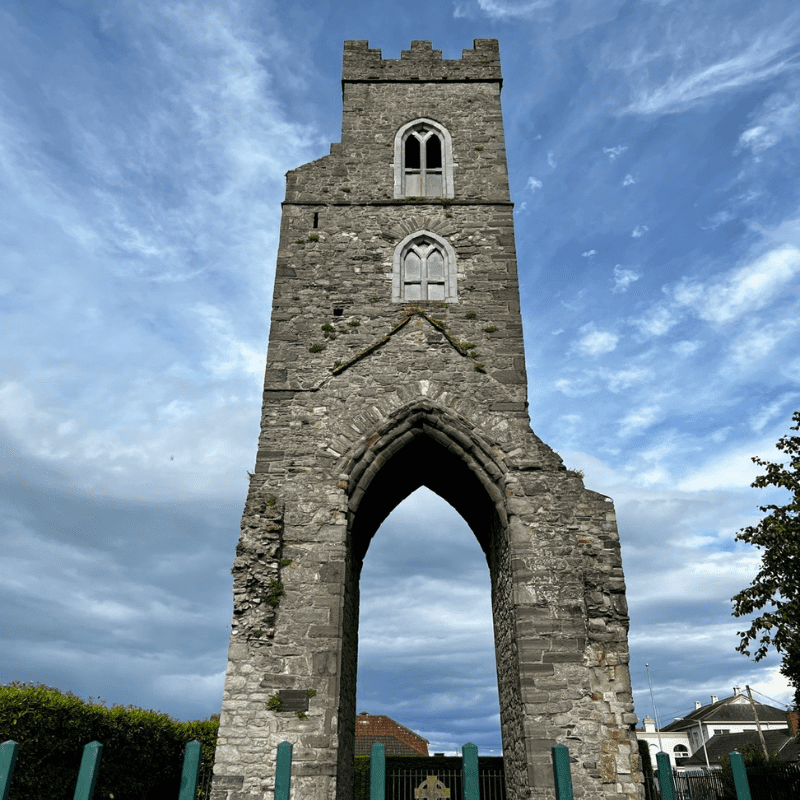
Magdalene Tower
The Tower, standing on the highest point in Drogheda, is fenced in on the private grounds of St. John of God Service. The gate was open and unlocked, and we could take a closer look. We also met the local well-cared-for cat, Ginger, who makes its home at the tower.
Monasterboice
Our last stop was the ruins of another monastic site just a few miles north of Drogheda. Monasterboice was an important religious center during the 5th Century until Mellifont Abbey existed.
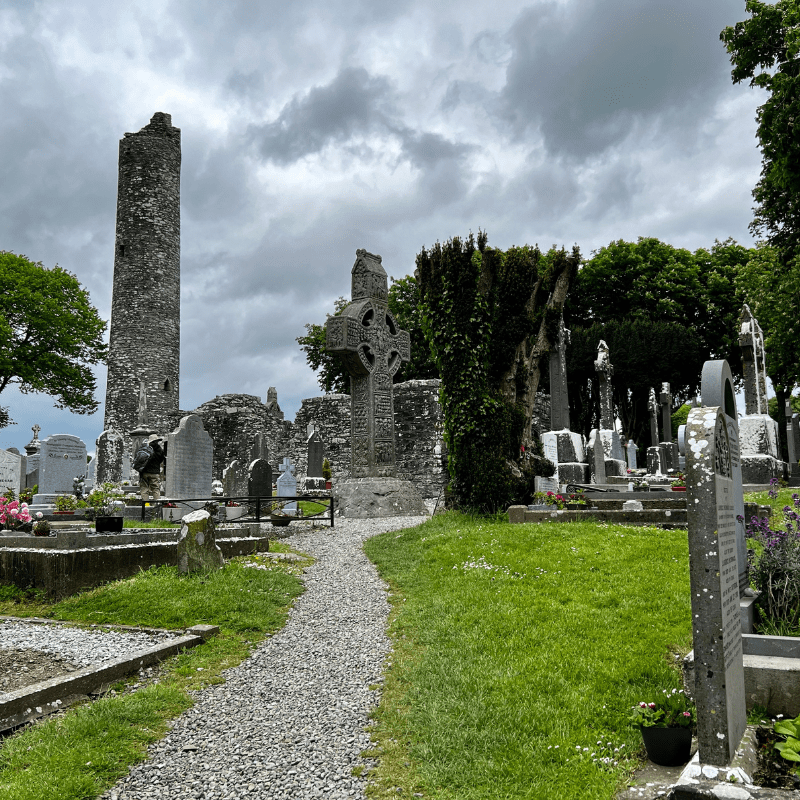
Round Tower at Monasteraboice
The cemetery is well-maintained and has a large parking lot across the street. Finally, we found the geocache hidden in the cemetery. The notable things to see in the old graveyard are the two great high crosses and a round tower.

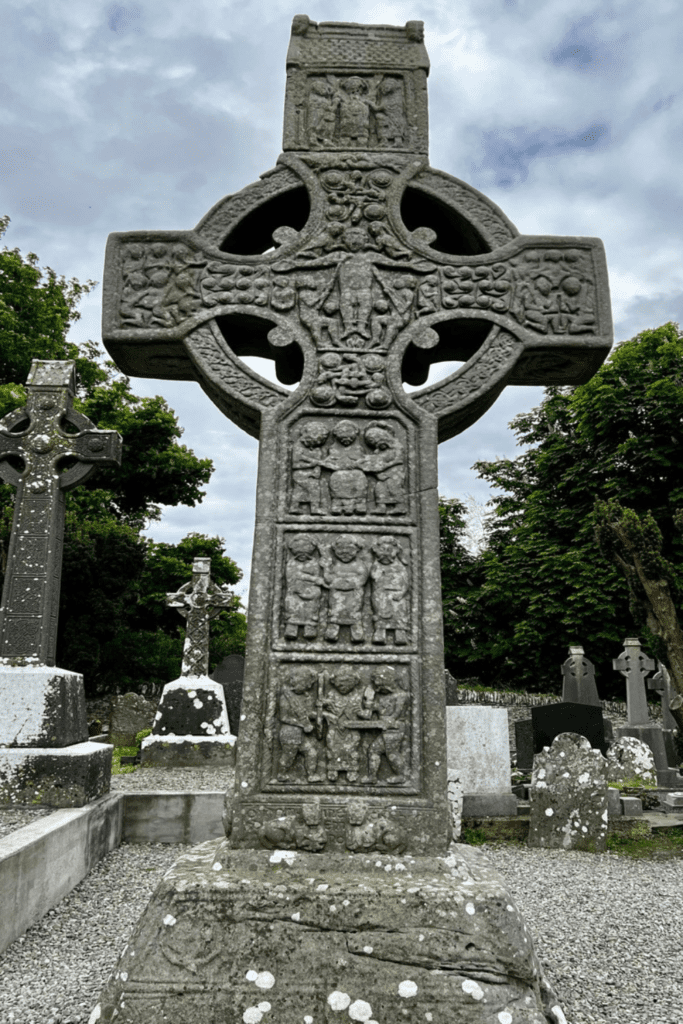
High crosses at Monasterboice
Back to Dundalk
We had a full day of incredible sightseeing in a relatively small area surrounding Drogheda. Ireland has become a never-ending story for us.
Check back next week for a few more gems in Ireland. We have completed our exploration of ancient history in County Louth – maybe.
- Seaside charm, leprechauns, and history
- Nine things to see in Downpatrick, Northern Ireland
- Why do we keep returning to Ireland?
- Must-know tips before traveling to Ireland
- Ireland has its hooks in me!
- Ireland – Making a Plan
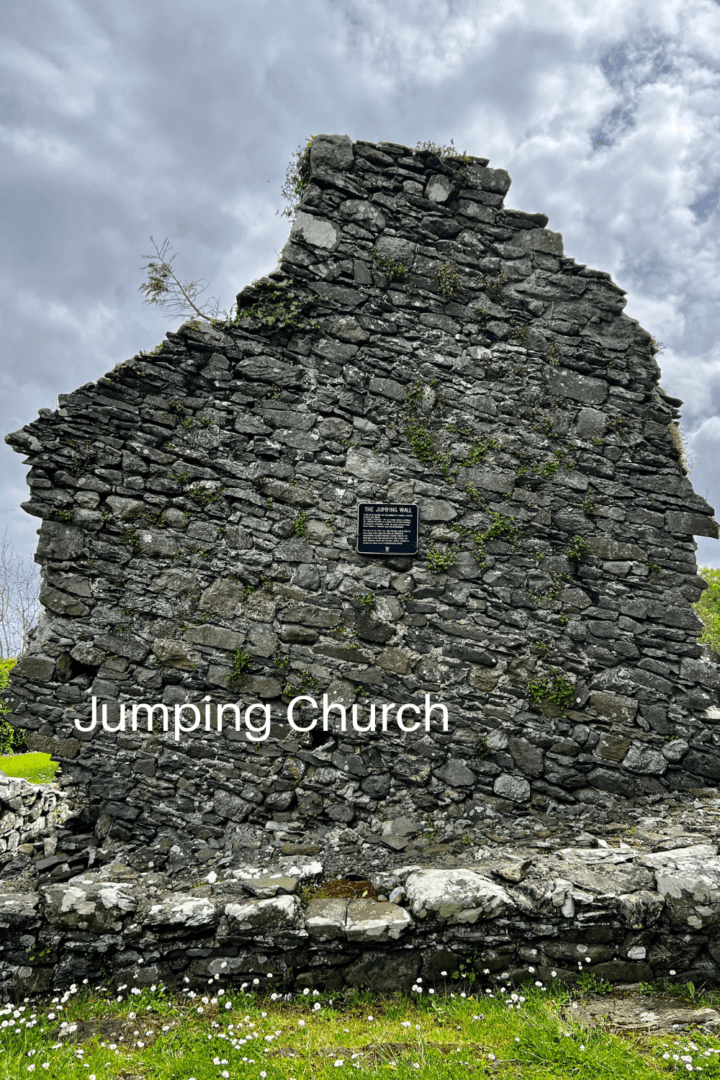
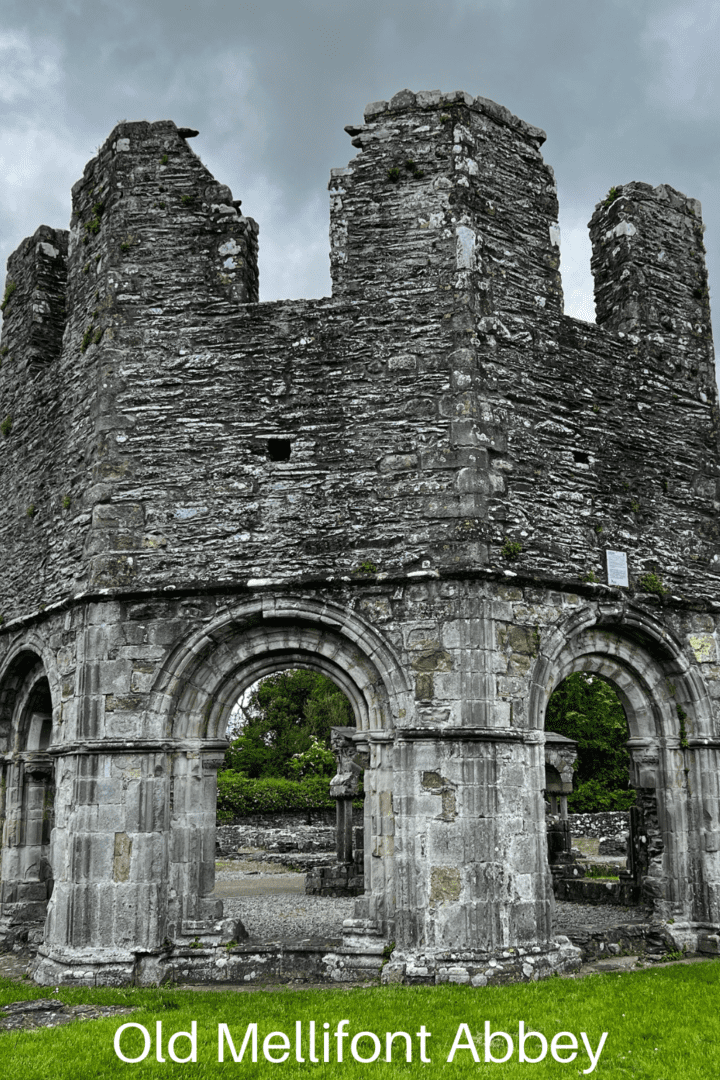
It is so fascinating! I love all the ruins and their history. Makes me want to go! Thanks
Thank you. There IS so much to see.